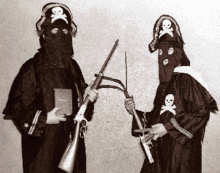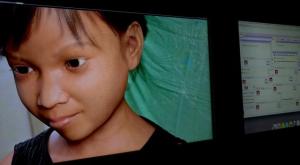Wall Creeper, Shadow Hare, Dragonheart, Zetaman, the Crimson First—never heard of them? They’re self-proclaimed superheroes patrolling the streets of Denver, Cincinnati, Miami, Portland, and Atlanta. There are dozens more—Hero Man in L.A., Captain Prospect in D.C., Razorhawk in Minneapolis—with entire Leagues of such would-be Avengers: Team Justice, Black Monday Society, Rain City Superhero Movement, Superheroes Anonymous. RealLifeSuperheroes.com insists its members “are not ‘kooks in costumes,’ as they may seem at first glance.” According to rlhs.org, they “seek to inform, and, most importantly, inspire” through “charity work and civic activities.”
Since these organizations, like non-costumed neighborhood watches, work within the law, they usually do no harm, and their “safety patrols” might even deter crime a bit. But they’re not superheroes. They’re self-designed cosplayers staging theatrics on city streets. They don’t actuate the superhero formula. Which is a very good thing. Otherwise they would be a league of Patrick Drums, AKA The Scorpion.
Drum doesn’t dress up in a giant scorpion costume. When police arrested him in 2012, he was wearing a white tank top and khakis. Lexi Pandell recently detailed his adventures in The Atlantic. Like the Punisher or Dexter or the 1930s Spider, Drum is dedicated to killing bad guys. Oliver Queen on season one of Arrow crossed off names from a checklist of targets he murdered; Drum only ex-ed out the first two on his list of 60 registered sex offenders living in his Washington state county (about eighty miles outside the safety patrols of Seattle’s “real life superheroes” Buster Doe, No Name, and Phoenix Jones). While RLSH members “believe in due process” and “are certainly not vigilantes,” Drum told a courtroom, “This country was founded on vigilantism.”
The list of superheroes taking inspiration from animals is longer than Clallam County’s registered pedophiles. Bruce Wayne, like Drum, needed a defining emblem before starting his war on criminals. A bat didn’t fly through Drum’s window, so he looked back to a childhood memory instead. In a note he left beside his victims’ bodies, he explained how he’d once watched scorpions in a pet shop aquarium circling “in full battle ready posture” to protect a pregnant female. “This spirit always impressed me.” He left his emblem, a scorpion encased in a lollipop, with his signed notes. After his second murder, Drum planned to go off the grid and “live in the wild,” the site of his origin story. When he was ten, a stranger got him drunk and lured him into the woods for oral sex. Like Batman, Drum is after vengeance.
“My actions were not about me,” he wrote in superheroic grandeur. “They were about my community. I suffered many failures and my overall view of things was one of hopelessness. I took that hopelessness and in turn threw myself away to a purpose. I gave myself to something bigger than myself.” And, as in so many superhero sagas, the community championed him. The county prosecutor abandoned the death penalty because she doubted she could convince a jury to execute him. Drum has too many supporters.
And what if those supporters organized a league of like-minded vigilantes? They wouldn’t look like comic book Avengers or any RLSH cosplayers. They’d look like the Klan. Detroit is currently patrolled by a RLSH cosplay team called the Michigan Protectors, but back in the ’30s, the city was under the watch of the Black Legion, a splinter group from the Ohio KKK. The Protectors’ Adam Besso, AKA Bee Sting, retired from superheroing in 2012 after pleading guilty to attempted assault with a weapon (his “stinger” was a shotgun). But that’s nothing to the 1936 conviction of nine Black Legion members for the kidnapping and murder of Charles Poole, an alleged wife-beater targeted by the vigilantes.
According to historian Peter H. Amann, the Black Legion’s founder, William Shepard, supplied his superhero team with secret rites and costumes: “You have to have mystery in a fraternal thing to keep it up,” he said; “the folks eat it up.” Black Legionnaires sported black hoods, pirate hats, and robes with cross-and-bones on the chest—the same emblem Exciting Comics’ superhero Black Terror would use in comic books. Despite the Black Legion’s apparent passion for “crime fighting,” in “real life,” Amann writes, their actions “were neither glamorous nor likely to reduce crime.”The Detroit News made the same conclusion: “Hooey may look like romance and adventure in the moonlight, but it always looks like hooey when you bring it out in the daylight.”
So will the world never witness a League capable of championing real Justice? Maybe not, but the virtual world already has. Terre des Hommes, an international children’s rights charity group, has introduced “a new way of policing.” Like Drum, the organization wants to target pedophiles, but instead of hunting down and killing registered convicts, this Justice League exposes unconvicted ones roaming freely on the web. From their high tech batcave, a warehouse in Amsterdamn, members of Terre des Hommes (it means “Land of People”) don the team disguise of a computer-animated Filipino child named “Sweetie.” She’s supposedly ten (same age as Drum when he was assaulted), and when predators video message with her, they have no idea Terre des Hommes is locating their real world addresses. So far the superheroic Sweetie has netted some 200,000 Internet users. A thousand of them wanted to pay her to perform sexual acts.
Terres des Hommes has swept 71 countries so far. Drum couldn’t cover a single U.S. county. I doubt many RLSH cosplayers have considered assuming the alter ego of a powerless ten-year-old to battle crime, but Sweetie is probably the only real life superhero out there. I wish her Justice League continued success.




This may be a little OT, but…Sweetie doesn’t look that real to me from the pictures I’ve seen. I would say you can’t count on the target audience to have been very bright, but apparently that would be stereotypical and wrong, as the operation netted all sorts of dudes (is it safe to assume they were all men?). She’s got that sterile CG look to her face, no facial imperfections whatsoever, and somewhat clumpy hair. Not hating, though. It’s possible too that the end result looked different from what I saw.
A little more on-topic, I wonder how many of the cases caught in this, er, sting will/can lead to actionable arrests and charges, as well as how this program will be used in the future or if it doesn’t make these people more wary of CGI kids in future.
All fair points, mywa. The screenshot certainly didn’t fool me either, but there’s a short documentary online that includes some more convincing moving CGI. As far as prosecution, like many law enforcement characters in superhero comics, the Netherlands police were not pleased that private citizens were conducting stings that produced no evidence useful in court. But I don’t think the people who were caught knew it.
Mywa has a very good point– in many cases, actions like this can badly damage future prosecutions. (I’m reminded of the reality show “To catch a predator” which resulted in more than a few charges being dropped by local authorities).
But I think there’s a bigger issue, which is that by doing so, by causing people to think about being caught without necessarily being able to put them in prison, you run the risk of actually improving the suspects ability to avoid real police action. The same tactics to avoid being taken in by Sweetie may also work to avoid being taken in by an FBI sting.